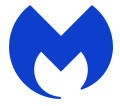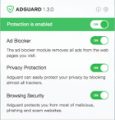What is NetFunctionSearch
According to security experts, NetFunctionSearch is an adware application. Adware can make big problem to your Mac. Adware sometimes named ‘ad-supported’ software is part of harmful programs which displays a large amount of adverts in form of pop-ups, discounting deals, promos or even fake alerts on the computer. Adware can seriously affect your privacy, your computer’s performance and security.
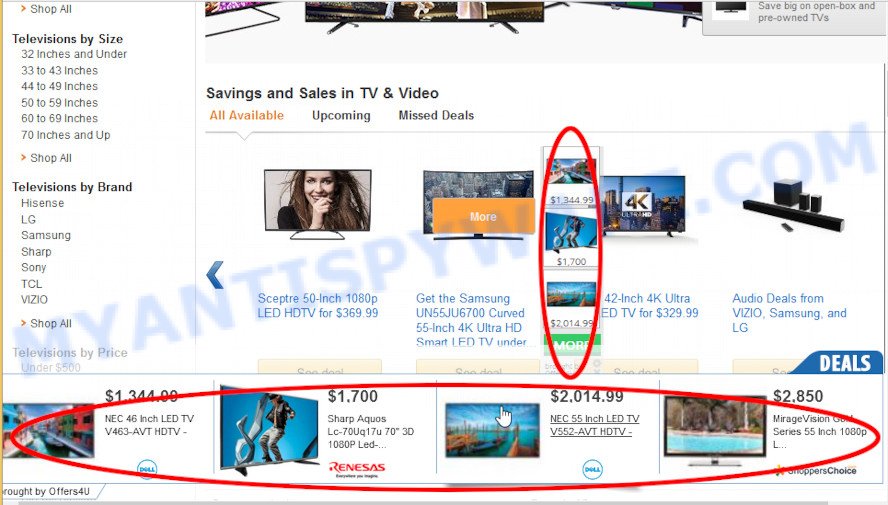
Unwanted ads
Another reason why you need to remove the NetFunctionSearch adware is its online data-tracking activity. It can analyze the location and which Net web-sites you visit, and then show ads to the types of content, goods or services featured there. Adware software creators can collect and sell your browsing information and behavior to third parties.
As evident, the NetFunctionSearch adware is quite dangerous. So, we recommend you delete it from your computer sooner. Follow the steps presented below to get rid of adware from your MAC and Safari, Mozilla Firefox and Chrome.
How does NetFunctionSearch get on your MAC system
Adware may be spread through the use of trojan horses and other forms of malicious software, but in many cases, adware is bundled with certain freeware. Many developers of free programs include additional applications in their setup file. Sometimes it is possible to avoid the installation of any adware: carefully read the Terms of Use and the Software license, choose only Manual, Custom or Advanced installation option, disable all checkboxes before clicking Install or Next button while installing new free programs.
Threat Summary
| Name | NetFunctionSearch, NetFunctionSearch 1.0 app |
| Type | adware, potentially unwanted application (PUA), Mac malware, Mac virus |
| Detection Names | OSX.Trojan.Gen, Trojan-Downloader.OSX.Adload, ApplicUnwnt, Adware/Adload!OSX, Adware.MAC.Generic, MacOS.Agent-MT, Program:MacOS/Vigram.A and Osx.Adware.Cimpli |
| Distribution | Free software installers, suspicious popup ads, torrent downloads and fake software updaters |
| Symptoms | The website links redirect to a web-sites different from what you expected, unclosable window appear and recommend fake updates and other unwanted applications, new entries appear in your Applications folder, unwanted internet browser plugins or toolbars keep coming back, your MAC settings are being changed without your request, speed test good but internet slow. |
| Removal | NetFunctionSearch removal guide |
How to remove NetFunctionSearch
Fortunately, it is not hard to delete the NetFunctionSearch adware. In the following guidance, we will provide two solutions to clean your machine of this adware software. One is the manual removal method and the other is automatic removal method. You can select the solution that best fits you. Please follow the removal guidance below to delete the adware software right now!
To remove NetFunctionSearch, use the steps below:
- Remove unwanted profiles on Mac device
- Uninstall NetFunctionSearch related apps through the Finder
- Remove NetFunctionSearch related files and folders
- Scan your Mac with MalwareBytes
- Remove NetFunctionSearch from Safari, Chrome, Firefox
- How to stay safe online
Remove unwanted profiles on Mac device
NetFunctionSearch can install a configuration profile on the Mac system to block changes made to the browser settings. Therefore, you need to open system preferences, find and delete the profile installed by the adware.
Click Apple menu ( ![]() ) > System Preferences.
) > System Preferences.
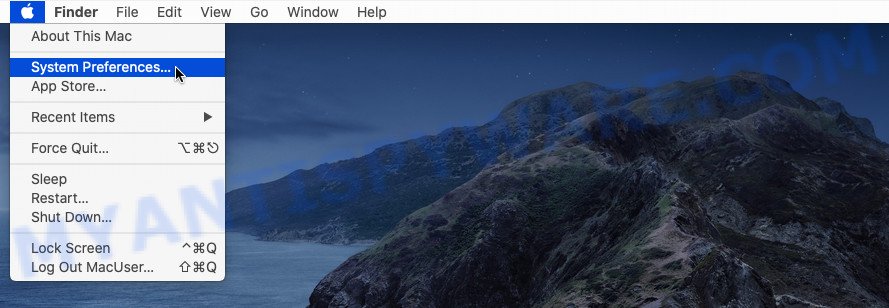
In System Preferences, select Profiles. if there is no Profiles in the list of preferences, that means there are no profiles installed on the Mac computer. If there is Profiles in the list, then click on it, then select a profile related to NetFunctionSearch.
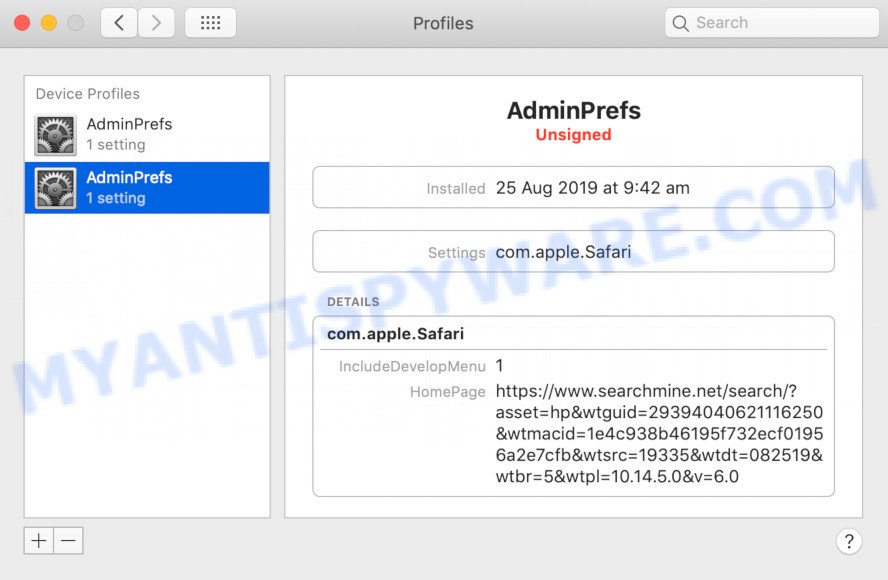
To delete a malicious profile, click on the minus button ( – ) located at the bottom-left of the Profiles screen.
Uninstall NetFunctionSearch related apps through the Finder
In the next step, you need to check the list of installed apps on your Mac computer and uninstall all unused, unknown and suspicious software.
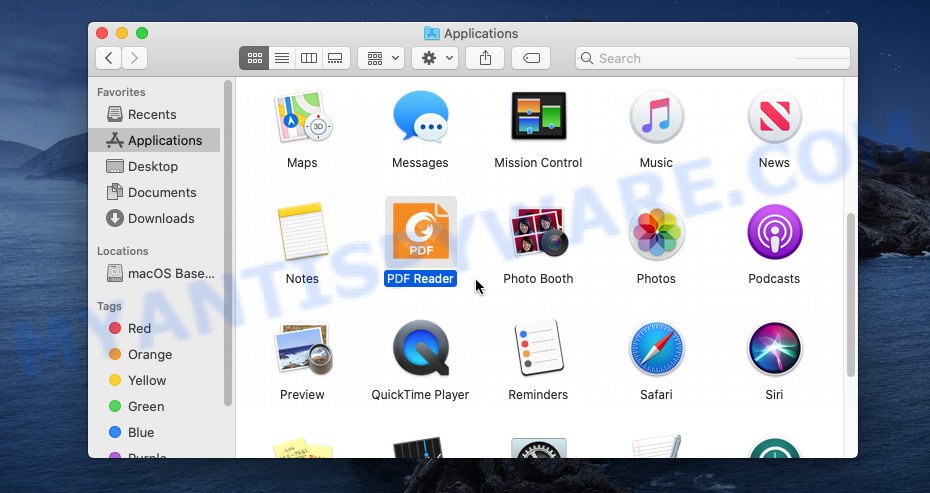
- Open the Finder.
- Click “Applications”.
- It will display a list of all programs installed on the MAC.
- Scroll through the all list, and delete suspicious and unknown applications. Pay maximum attention to the program you installed last.
- Drag the suspicious program from the Applications folder to the Trash.
- Empty Trash.
Remove NetFunctionSearch related files and folders
Now you need to try to find NetFunctionSearch related files and folders, and then delete them manually. You need to look for these files in certain directories. To quickly open them, we recommend using the “Go to Folder…” command.
NetFunctionSearch creates several files, these files must be found and removed. Below is a list of files associated with this unwanted program.
- /Library/LaunchDaemons/com.NetFunctionSearch.system.plist
- ~/Library/LaunchAgents/com.NetFunctionSearch.service.plist
- /Library/Application Support/.(RANDOM)/System/com.NetFunctionSearch.system
- ~/Library/Application Support/.(RANDOM)/Services/com.NetFunctionSearch.service.app
Some files created by NetFunctionSearch are hidden from the user. To find and delete them, you need to enable “show hidden files”. To do this, use the shortcut CMD + SHIFT + . Press once to show hidden files and again to hide them. There is another way. Click Finder -> Applications -> Utilities -> Terminal. In Terminal, paste the following text: defaults write com.apple.finder AppleShowAllFiles YES

Press Enter. Hold the ‘Option/alt’ key, then right click on the Finder icon in the dock and click Relaunch.
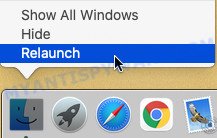
Click on the Finder icon. From the menu bar, select Go and click “Go to Folder…”. As a result, a small window opens that allows you to quickly open a specific directory.

Check for NetFunctionSearch generated files in the /Library/LaunchAgents folder

In the “Go to Folder…” window, type the following text and press Go:
/Library/LaunchAgents
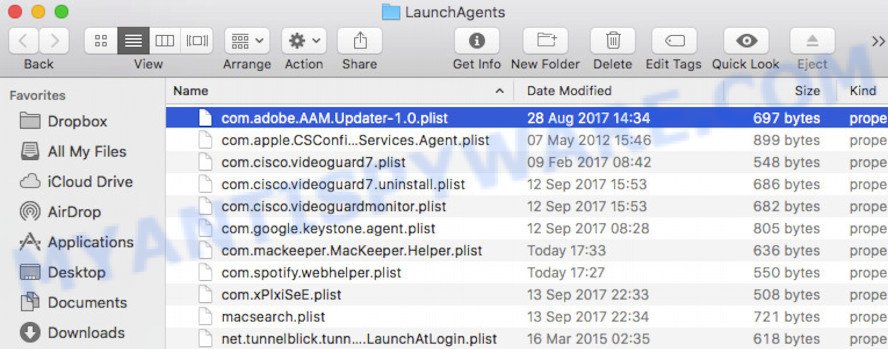
This will open the contents of the “/Library/LaunchAgents” folder. Look carefully at it and pay special attention to recently created files, as well as files that have a suspicious name. Move all suspicious files to the Trash. A few examples of files: search.plist, com.machelper.plist, com.google.defaultsearch.plist, , macsearch.plist, com.net-preferences.plist, com.NetFunctionSearch.service.plist and installapp.plist. Most often, browser hijackers, potentially unwanted programs and adware software create several files with similar names.
Check for NetFunctionSearch generated files in the /Library/Application Support folder

In the “Go to Folder…” window, type the following text and press Go:
/Library/Application Support
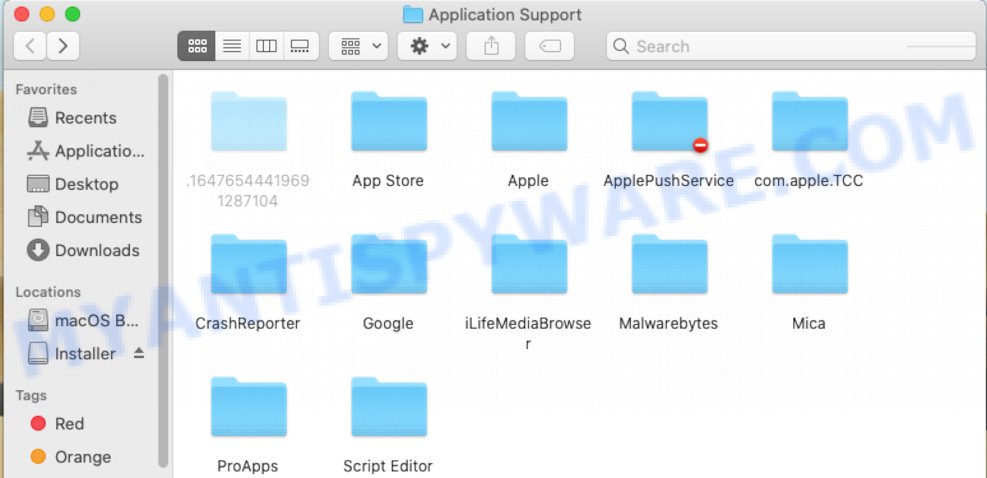
This will open the contents of the “Application Support” folder. Look carefully at its contents, pay special attention to recently added/changed folders and files. Check the contents of suspicious folders, if there is a file with a name similar to com.NetFunctionSearch.system, then this folder must be deleted. Move all suspicious folders and files to the Trash.
Check for NetFunctionSearch generated files in the “~/Library/LaunchAgents” folder

In the “Go to Folder…” window, type the following text and press Go:
~/Library/LaunchAgents

Proceed in the same way as with the “/Library/LaunchAgents” and “/Library/Application Support” folders. Look for suspicious and recently added files. Move all suspicious files to the Trash.
Check for NetFunctionSearch generated files in the /Library/LaunchDaemons folder
In the “Go to Folder…” window, type the following text and press Go:
/Library/LaunchDaemons

Carefully browse the entire list of files and pay special attention to recently created files, as well as files that have a suspicious name. Move all suspicious files to the Trash. A few examples of files to be deleted: com.macsearch.system.plist, com.installapp.system.plist, com.machelper.system.plist, com.search.system.plist and com.NetFunctionSearch.system.plist. In most cases, PUPs, browser hijackers and adware software create several files with similar names.
Scan your Mac with MalwareBytes
Manual NetFunctionSearch removal requires some computer skills. Some files and system entries that created by the adware can be not fully removed. We advise that use MalwareBytes Anti-Malware (MBAM) to scan the Mac. Moreover, this program will help you to delete adware, PUPs, toolbars and browser hijackers that your MAC can be affected too.
Installing the MalwareBytes Anti-Malware (MBAM) is simple. First you will need to download MalwareBytes from the link below. Save it on your Desktop.
21021 downloads
Author: Malwarebytes
Category: Security tools
Update: September 10, 2020
When the downloading process is finished, close all apps and windows on your machine. Run the saved file. Follow the prompts.
The MalwareBytes Free will automatically start and you can see its main screen as shown in the figure below.
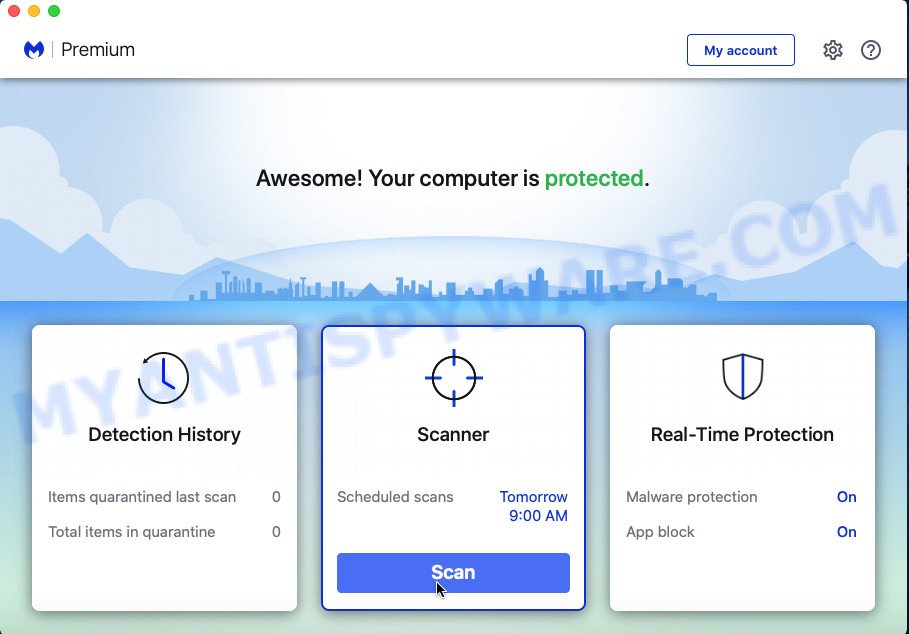
Now click the “Scan” button for checking your MAC system for the NetFunctionSearch adware. This procedure can take quite a while, so please be patient. While the MalwareBytes Anti Malware is checking, you can see number of objects it has identified either as being malware.

After the system scan is finished, you can check all items detected on your MAC OS. Review the report and then click the “Quarantine” button. The MalwareBytes Free will get rid of NetFunctionSearch adware software.
Remove NetFunctionSearch from Safari, Chrome, Firefox
Remove unwanted extensions is a simple solution to remove NetFunctionSearch adware and return web-browser’s settings that have been replaced by adware software.
You can also try to delete NetFunctionSearch adware by reset Chrome settings. |
If you are still experiencing issues with NetFunctionSearch adware removal, you need to reset Mozilla Firefox browser. |
|
How to stay safe online
By installing an ad blocking application such as AdGuard, you are able to block malicious web-pages, stop autoplaying video ads and remove a large amount of distracting and intrusive ads on web-pages.
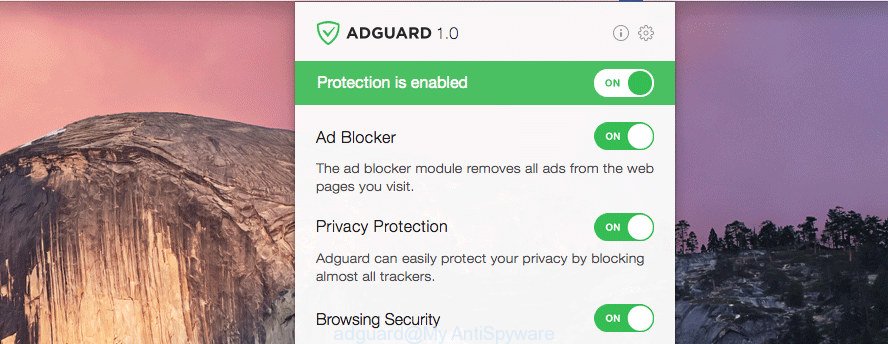
- AdGuard can be downloaded from the following link.
AdGuard for Mac download
3782 downloads
Author: © Adguard
Category: Security tools
Update: January 17, 2018
- Once downloading is finished, run the downloaded file. You will see the “Setup Wizard” program window. Follow the prompts.
- When the installation is complete, click “Skip” to close the install application and use the default settings, or click “Get Started” to see an quick tutorial that will assist you get to know AdGuard better.
- In most cases, the default settings are enough and you do not need to change anything. Each time, when you launch your Apple Mac, AdGuard will start automatically and stop annoying ads, block harmful and misleading web sites.
Finish words
Now your MAC system should be free of the NetFunctionSearch adware. We suggest that you keep AdGuard (to help you block unwanted ads and annoying harmful web sites) and MalwareBytes (to periodically scan your MAC system for new malware, browser hijackers and adware). Make sure that you have all the Critical Updates recommended for Mac operating system. Without regular updates you WILL NOT be protected when new browser hijackers, harmful software and adware software are released.
If you are still having problems while trying to remove NetFunctionSearch from your web browser, then ask for help here.
